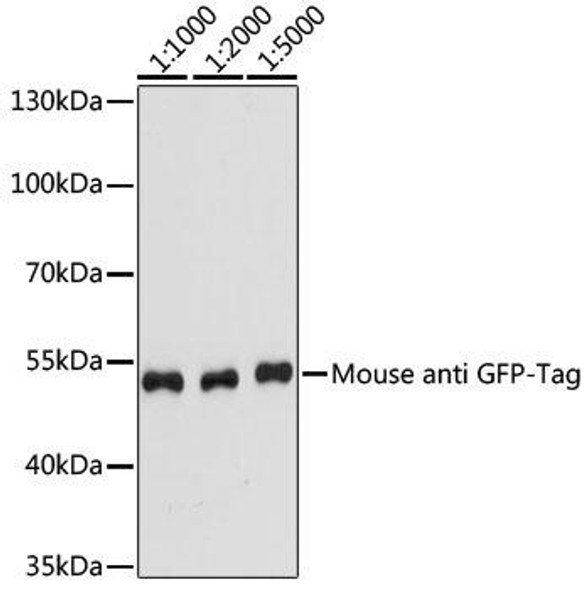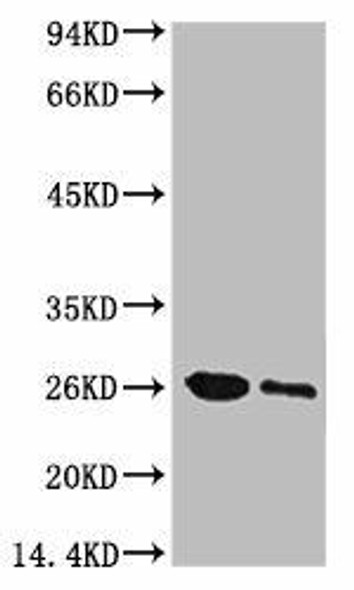Description
| Product Name: | GFP Monoclonal Antibody |
| Product Code: | MACO0665 |
| Size: | 50µg |
| Target Names: | GFP |
| Species Reactivity: | N/A |
| Host Species: | Mouse |
| Antigen Species: | N/A |
| Tested Applications: | ELISA, WB, IF, FC, IP; Recommended dilution: WB:1:50000-1:6400000, IF:1:50-1:200, FC:1:100-1:300, IP:1µl-2µl |
| Isotype: | IgG2b |
| Clone ID: | 6C11C11 |
| Conjugate: | Non-conjugated |
| Clonality: | Monoclonal |
| Antigen: | Recombinant GFP Protein |
| Form: | Liquid |
| Buffer: | Preservative: 0.03% Proclin 300 Constituents: 50% Glycerol, 0.01M PBS, PH 7.4 |
| Purification Method: | Protein G purified |
| Storage: | Upon receipt, store at -20°C or -80°C. Avoid repeated freeze. |
| Aliases: | CFP, eGFP, eYFP, GFP, GFP tag, YFP |
| Uniprot ID: | N/A |
| Background: | The green fluorescent protein (GFP) is a protein that exhibit bright green fluorescence when exposed to blue light. The protein is in the shape of a cylinder, comprising 11 strands of beta-sheet with an alpha-helix inside and short helical segments on the ends of the cylinder. Inward-facing sidechains of the barrel induce specific cyclization reactions in the tripeptide Ser65-Tyr66-Gly67 that lead to chromophore formation. Its amazing ability to generate a highly visible, efficiently emitting internal fluorophore is both intrinsically fascinating and tremendously valuable. The green-fluorescent protein (GFP) of the jellyfish Aequorea victoria has always been used as a universal reporter in a broad range of heterologous living cells and organisms. GFP has become well established as a marker of gene expression and protein targeting in intact cells and organisms. |
| Research Area: | Neuroscience |



![GFP Monoclonal Antibody [PAT2G5AT] (CPAB0542) GFP Monoclonal Antibody [PAT2G5AT] (CPAB0542)](https://cdn11.bigcommerce.com/s-rd6ounxcu2/images/stencil/590x590/products/58763/63945/gfp-monoclonal-antibody-pat2g5at-cpab0542__23274__50829.1706535209.jpg?c=1)


